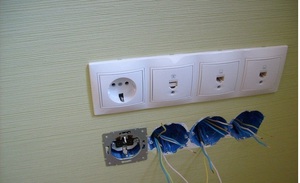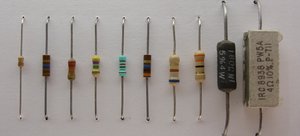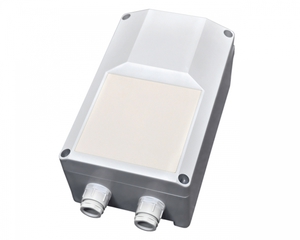How to choose an LED lamp for the home: important characteristics and benefits of light bulbs
Lighting technology is constantly evolving. So, LED lamps are widely available today, which a few years ago were a rarity. Before using such a light bulb, you must study its characteristics and features.
The principle of operation
LEDs were previously used only in electronic equipment. Initially, the scope of LEDs was considered only a billboard, various light indicators, instrument panels of machines. However, over time, LED light bulbs have emerged, designed for home.
Unlike a conventional incandescent bulb, the alternating current in the LED becomes constant with minimal energy loss and low heating, due to which the invention is considered safe. The brightness of the light directly depends on the current: the higher the figure, the more brightness. This principle of operation ensures the popularity of this light source.
Experts say, that in the near future the LED lamp will displace analogues from the market. Probably, so be it, after all 5 years ago, almost nothing was known about LEDs, 2-3 years ago they were an expensive novelty, and today are sold in any market.
Advantages and disadvantages
LED bulbs differ favorably from their energy-saving counterparts and incandescent lamps. Such products are used for street lighting, lighting of houses, offices and production facilities. There are a number of reasons for its huge popularity.
- Economy. The product consumes a minimum of electricity, so you can save on electricity.
- Durability. Manufacturers claim, that the service life of LED lamps is approximately 50 thousand. Hours, that is 9 years. This coincides with reality, when it comes to houses and apartments, where the light is on quite rarely. In most cases, the bulbs will last for 5-6 years. By the end of this period, they will not burn out, and become less bright. The manufacturers claim, that the brightness will drop by just 25-35%.
- Low heat dissipation. LED lamps are considered quite safe, because they are practically not heated. During the relevant tests it was found, what incandescent bulbs on 10 Watts are heated to 168? C, energy saving - 81? C, LED - total 30? C.
- Strength. Ordinary light bulbs are very fragile. They can be crushed, just taking in hand. LED analogues are stronger. Even if you miss them, there will be no fragments.
Naturally, LED bulbs have a number of disadvantages.
- High price. The cost of such a product is really high, however, this disadvantage is offset by savings, possible due to the long period of use and consumption of a minimum amount of electricity.
- Special lamps. That the powerful LED lamp worked long and stably, you need to buy a special lamp. This should be taken into account, that the bulb of the lamp may be opaque or transparent. In the first case, the color is scattered, and the second variety is suitable for crystal chandeliers. If you do not pay attention to this factor, then in the room instead of uniform lighting there will be a couple of spots of light.
Classification of plinths
The base is part of the light bulb, which provides contact with the power supply. This detail is divided into pin and twisted. The first group is denoted by the letter G, and a friend - E.
- E27 - ordinary socket with thread. It is suitable for all chandeliers and other appliances, which are intended for installation of incandescent lamps and energy-saving varieties.
- E14 resembles E27, the only difference is the diameter. This base is suitable for most luminaires. It is used in the creation of lamps "candle" and "mignon".
- GU5.3 - a more modern base, which has a pair of small pins. Similar LEDs- it is accepted to replace lamps completely.
- GU10. Usually, this base is installed in built-in lamps, designed to illuminate kitchen and work tables. It is also mounted in the hoods.
- G4. At the end of this base there are two wiring. Usually, this variety is used in small light bulbs, highlights pictures.
- G9. This base is found in fluorescent and LED lamps, which are an alternative to halogen lamps, which are considered less effective. This base is considered more convenient when installing and replacing light bulbs.
light temperature
The main feature of the LED is the ability to select the light temperature. It is different: cold, slightly bluish, daily, pink and yellow. The optimum temperature for the house is from 2600 to 3200 TO, that is, warm white, and 3700-4200 TO, which is considered naturally white.
The temperature of the light bulb is level 6000 K provides bright cold lighting, which is considered uncomfortable. If this figure is less 2600 TO, then a heavy yellowish light emerges, and the situation in the house becomes depressing. This temperature is provided in the cheapest lamps. Naturally, it is very difficult to live in such lighting. In accordance, LED lamps from a reliable manufacturer should be preferred.
Other important factors
-
The color rendering index characterizes the visibility of other colors in the light bulb. The higher this figure, the transmission will be better. The level is comfortable for a person 80 CRI and more.
- Brightness management. Lamps with this feature are quite expensive, however, many of them can be combined with systems, which are provided for incandescent bulbs.
- Base and radiator. Choosing a lamp, should be considered, that the plinth must be firmly fixed. Its marking must correspond to the marking of the cartridge. Powerful lamps have a large radiator. This part is made of aluminum, ceramics or graphite, it is also covered with thermoplastic. According to recognized standards, the radiator can heat up to 50-70? C.
- Service life. Usually, manufacturers specify the service life 20-50 thousand. Hours. However, in practice, light bulbs do not work that much. Durability depends on the quality of components and assembly. Cheap Chinese products often fail literally because 2-3 months. To calculate the service life of the lamp in the house, it is necessary to focus on the number of inclusions. If it is 20 thousand, Then, when you turn on the light ten times, the lamp will last for 5 years.
- Pulsation. High-quality LED lamp does not pulsate. If its assembly was performed incorrectly, then there may be a slight pulsation, invisible to man. It has a negative effect on the functioning of the nervous system and provokes increased fatigue. To make sure there is no pulsation, you need to point the smartphone camera at the LED lamp.
Manufacturers and cost
Many companies are involved in the creation of LED bulbs. These may be little-known organizations and companies with an excellent reputation. It is best to choose products from the manufacturer, specializing in creating light itself- and electrical equipment. Thanks to this approach, you will buy a really good quality light bulb. We are talking about such companies, like Philips, LEDEngin, Nichia and Osram. Product, released by these companies, will be really high quality and durable.
The cost of LED bulbs is influenced by its quality and manufacturer. It is best to choose an expensive product for 5-15 dollars, after all at its creation only qualitative components are used. This is a durable transformer, good LED with phosphor coating and excellent cooling system.
LED lamps have many benefits, which favorably distinguishes them from other analogues. Due to its good characteristics, this variety has become very popular. An additional advantage will be that fact, that most manufacturers produce fixtures, designed specifically for LED lamps, so, it will be easy to choose the right model.



